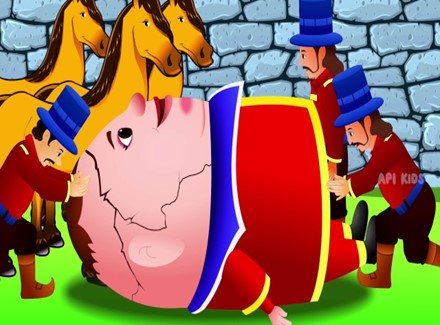Hollywood’s annual night of self-congratulations – the Oscars – occurred a few Sundays ago. Most of you know that Oppenheimer beat Barbie and Killers of the Flower Moon for best picture.
However, I suspect that few of you know that, in order to be considered for Best Picture (starting in 2024), the nominee must comply with at least 2 of 4 Diversity, Inclusion and Equity Standards (DEI) identified as Standards A, B, C and D. Standard A is for on-screen (actors and plot); Standard B is for off-screen leadership (support personnel); Standard C is for training and Standard D for marketing. See Oscars Standards.
But Hollywood being Hollywood, the Standards are more fantasy than real. The best picture nominee must meet 2 of the 4 standards and it’s virtually impossible not to meet at least two.
Group A Standards include the following:
- One actor in a major role must be from an underrepresented group (all such groups listed below).
- At least 30% of the actors in minor roles must be from underrepresented groups.
- The main story line, theme or narrative of the film is centered on an underrepresented group(s).
A movie must comply with only one of the 3 and complying with Number 1 is perhaps the easiest. Number 2 and Number 3 would really change things a lot but the go to loophole is Number 1. Remember, however, that there are three more standards to go and you only have to hit two of them so, if you fail here, you are not out of the running.
Group B Standards provide for the following:
- Two or more department heads must be from underrepresented groups and at least one of these positions must belong to an underrepresented racial or ethnic group.
- At least six other crew members must come from underrepresented groups.
- At least 30% of film crew members must be from underrepresented groups.
Again, Standard B only requires that one of the three must be met. So having a female Casting Director and a Samoan Cinematographer makes everything good. One down, one to go.
So how did “lily white” Oppenheimer make the cut? Well, it blew through Standard B since at least a dozen women were department heads and the head hairstylist was Hispanic.
And since Oppenheimer was a Universal film, it also satisfied both Standard C (training programs) and D (marketing) since Universal has extensive training programs for underrepresented ethnic and racial groups and, in addition, it has a Black Director of Domestic Marketing.
In other words, Universal films will always make the cut, even if they cannot comply with Standards A and B.
The bottom line: these DEI standards are a farce but allow the Hollywood elite to “signify” their commitment to inclusion (as long as it doesn’t hurt).
What is an underrepresented group? Here’s the list of the current racial or ethnic groups but I am sure that others will soon apply:
Asian
Hispanic/Latinx
Black/African American
Indigenous/Native American
Alaskan native
Middle Eastern/North African
Native Hawaiian, or other Pacific Islander
Or other underrepresented, racial or ethnic group
The underrepresented identity groups include the following:
Women
LGBTQ+
People with cognitive or physical disabilities.
Within the last few weeks, there was a serious proposal signed by 260 well-known individuals arguing that Jewish people should be identified as an underrepresented ethnic group. The signers included well-known actors such as David Schwimmer, Julianna Margulies and Debra Messing. So, I suppose if this proposal is accepted, there will be a premium on hiring Jewish actors.
This proposal probably made Samuel Goldwyn (MGM), Jack Warner (Warner Bros), Louis B. Mayer (MGM) and Jesse Lasky (Paramount) stand up in their graves as they and other Jewish people are primarily responsible for the creation of Hollywood. As the New York Times reviewer wrote (July 6, 1955) in reviewing a Scott Eyman’s biography of Lewis B. Mayer (“The Lion of Hollywood”) he was one of “the first- and second-generation East European Jews who built Hollywood created an idealized world where all differences were cast aside in favor of a dream in which everything was beautiful.”
The whole subject of DEI standards has become a lightning rod in the cultural wars we are now experiencing. For those on the right, they are “red meat” and, for those on the left, they must be vigorously defended. I think that the right may be more correct than the left on this issue.
The real hotbed for DEI standards is the American college or university. For example, the Chief Diversity Officer of Johns Hopkins Medicine recently resigned after she sent a newsletter identifying people with “privilege” (Baltimore Sun, March 6, 2024). Dr. Sherita Golden wrote that “privilege” was the “word of the month” defining it as a “set of unearned benefits given to people who are in a specific social group.” The groups she identified were white people, heterosexuals, cisgender people, men and Christians.
Once the conservative media got hold of that newsletter all hell broke loose and the national media picked up the story. And while Dr. Golden has resigned as Chief Diversity Officer, she remains on the Hopkins faculty. Hopkins Medicine has announced that a “national search” for a new Diversity Chief is underway. Think about that. Diversity Officers for universities are in demand on a national basis and I’m quite sure that they are extremely well paid and have well-staffed offices. This may be one of several reasons that college graduates are burdened with overwhelming debt.
I fall into all five of Dr. Golden‘s identified groups so I have “unearned privilege” times 5. But if you look at her definition more carefully, I think 99+% of the population are included given her comment about “cisgender people.” Cisgender means anyone who identifies with the plumbing they were given at birth. Almost all members of “underrepresented” groups are cisgender. In fact, with the exception of the transgender community, it’s hard to find anyone who does not fit into this category.
DEI Standards identify people in certain groups as being frozen in amber and whose only recourse is through a DEI intervention. Life is much more fluid than that and to think otherwise is fundamentally misleading. To create an infrastructure to carry out DEI interventions is good for the well-paid interveners but not for anybody else.
I don’t think Denzel Washington needed a DEI intervention to become one of the finest actors in my lifetime. He is excellent in good movies (Philadelphia, Malcolm, X, The Hurricane, Training Day, Glory) and even in mediocre movies (Equalizer 1,2,3). Always a joy to watch, he has been nominated for best actor on numerous occasions and has received an Oscar for best actor and another for best supporting actor.
I don’t think Oprah Winfrey needed a DEI intervention to become the GOAT of talk show hosts. She is just incredibly talented.
I don’t think Ellen DeGeneres needed a DEI intervention to become a talk show host with legions of followers. She too is remarkably talented.
I don’t think that Jerry Seinfeld and Larry David needed a DEI intervention to become the greatest comedians of recent years. They too were so talented that they have been keeping us laughing for 30 years.
There is no question that many people are discriminated against. I am quite sure that Denzel, Oprah, Ellen, Jerry and Larry experienced such discrimination and countless sleights, many intentional and some not. In the end, however, talent will out every time.
The DEI police don’t recognize this fundamental truth, nor do the universities who go on “national searches.”













